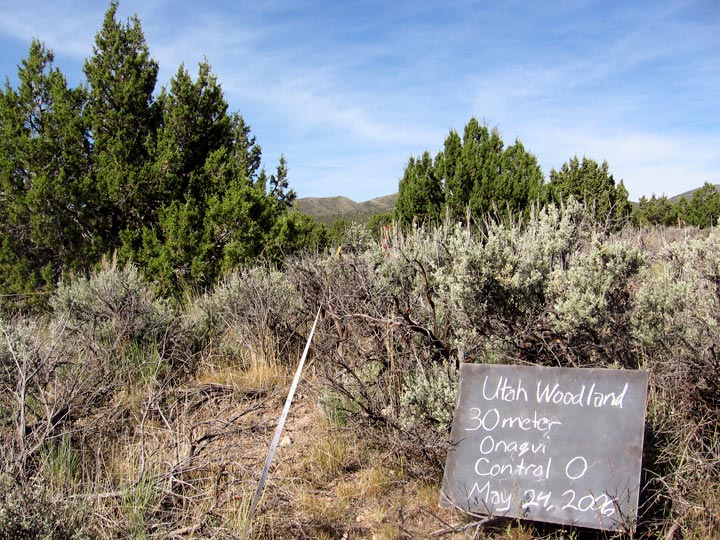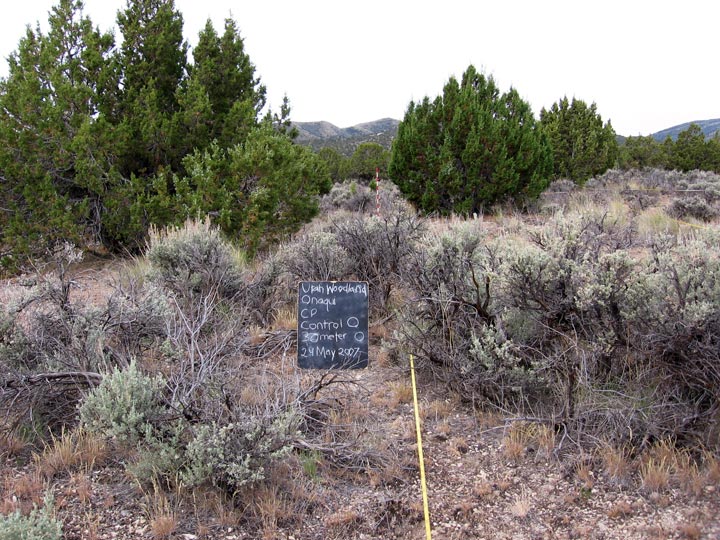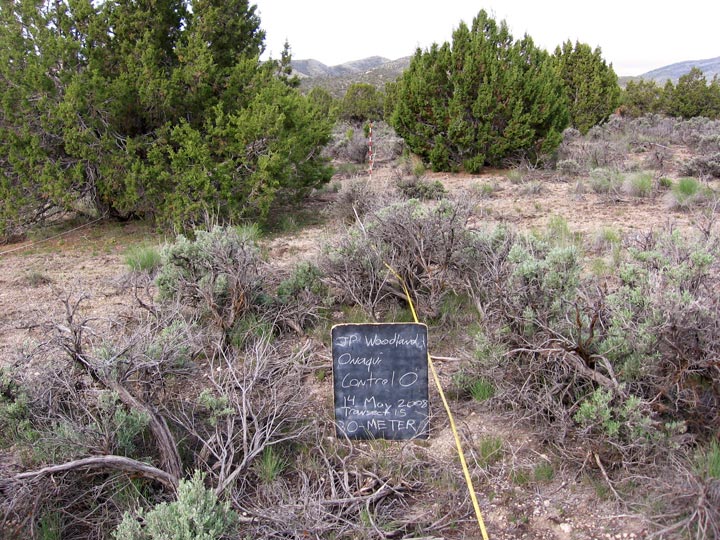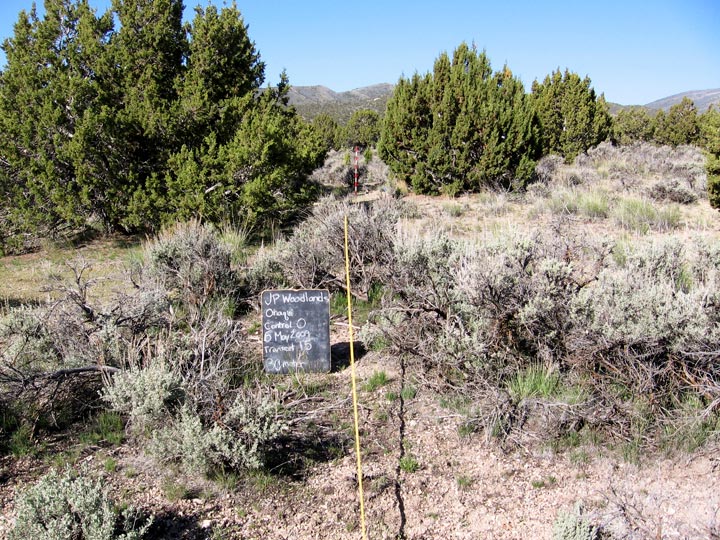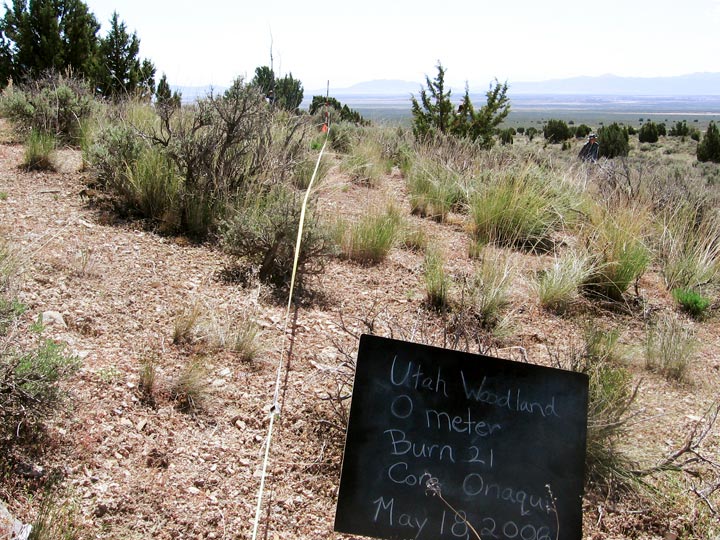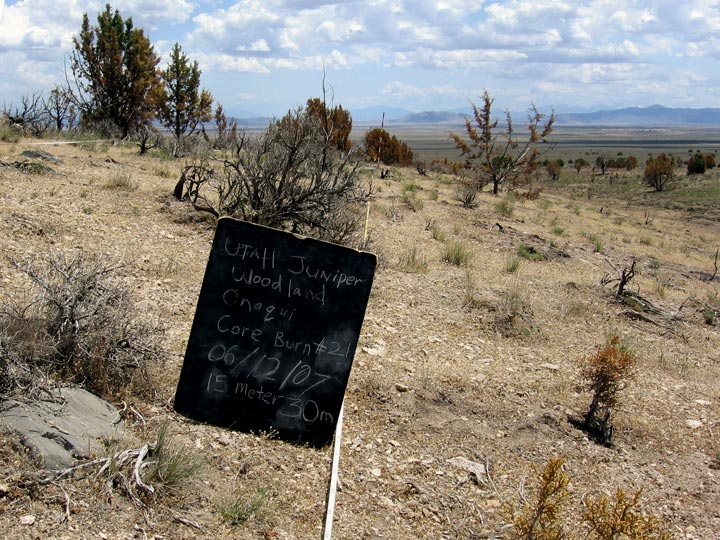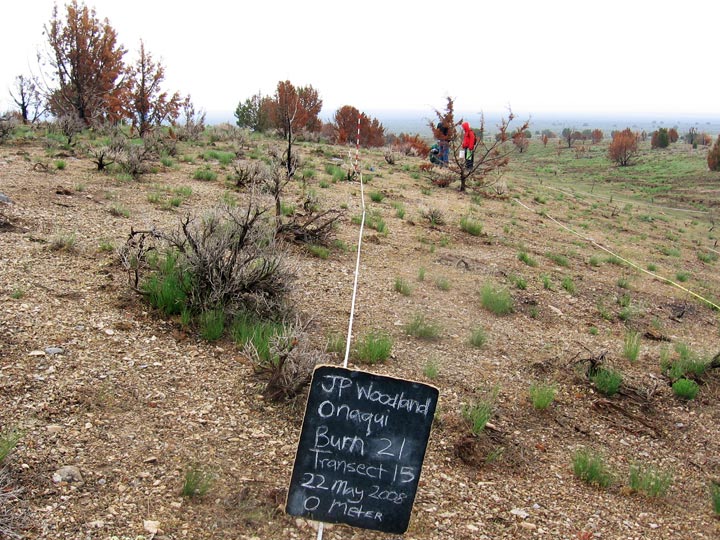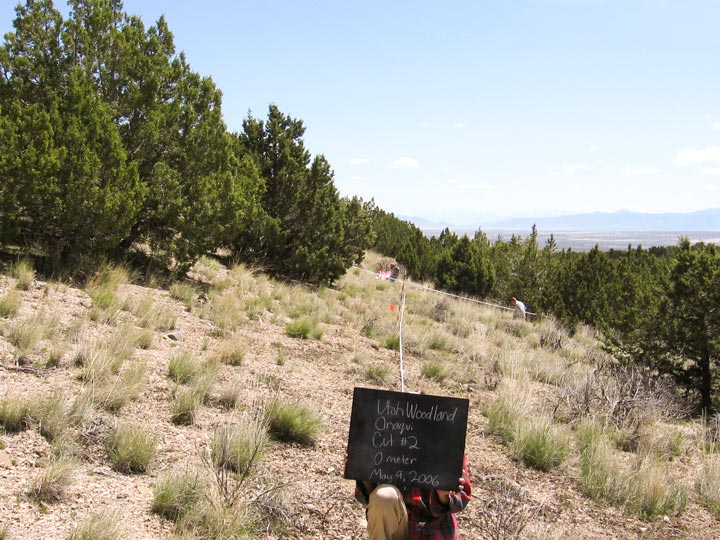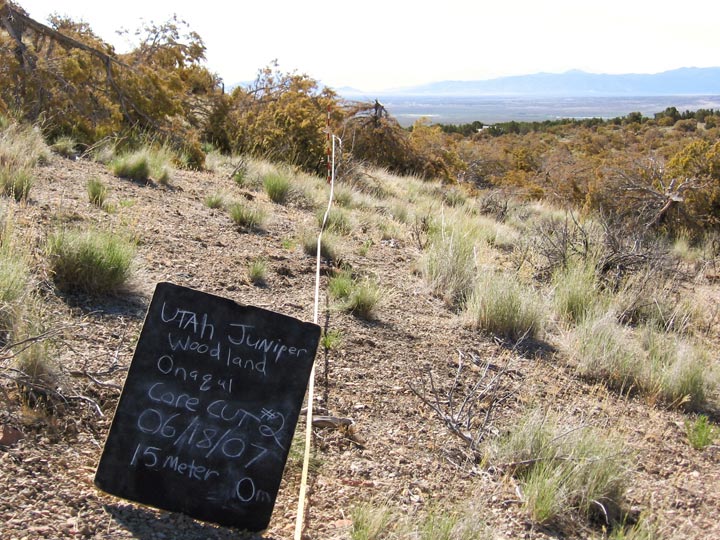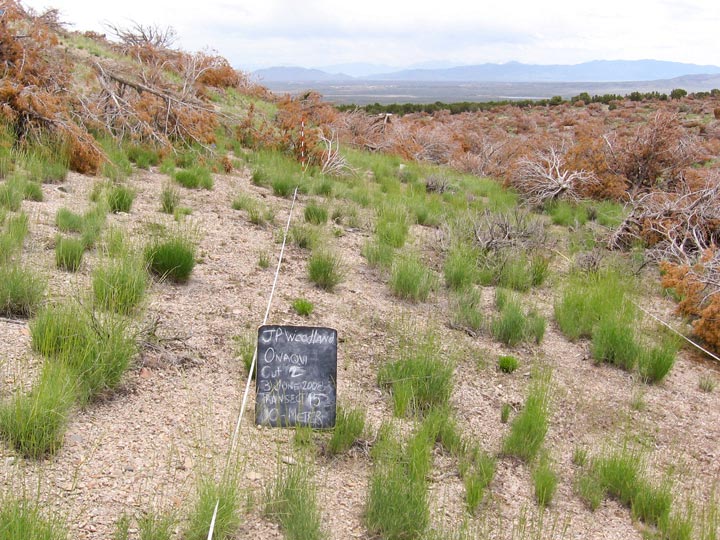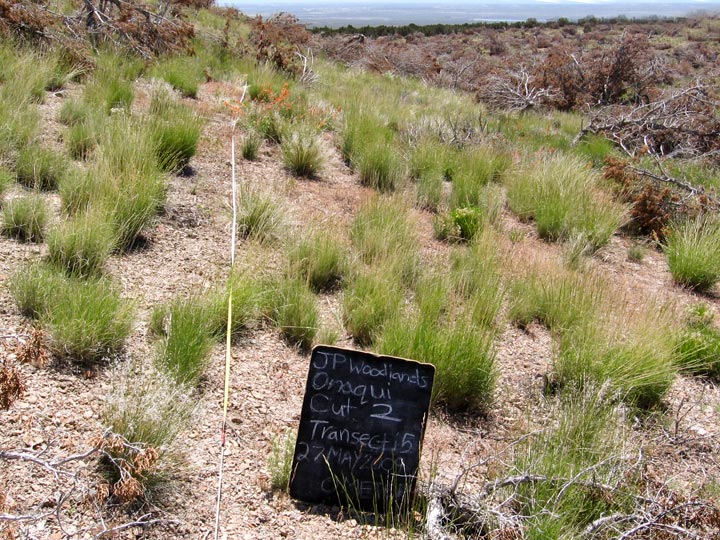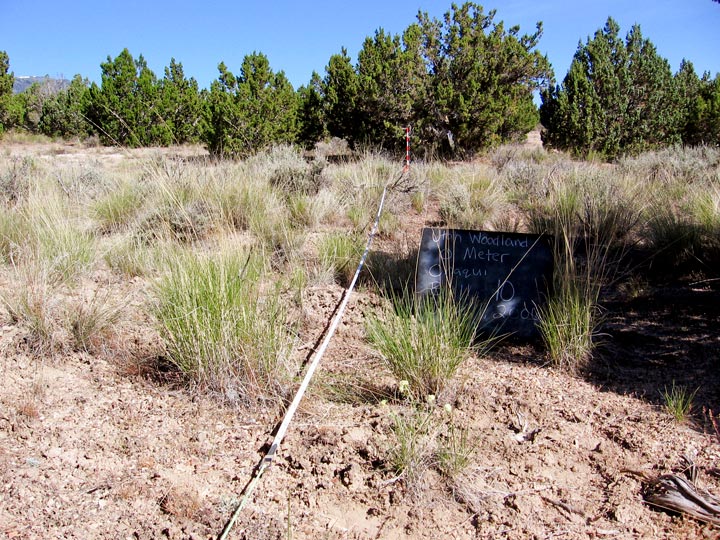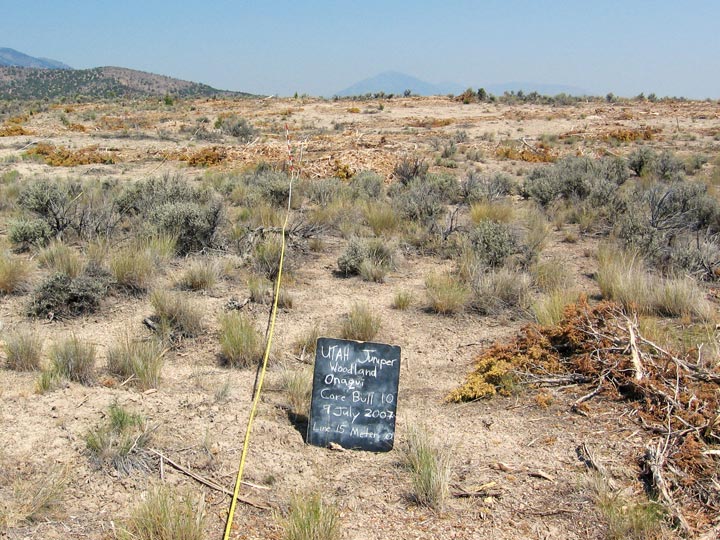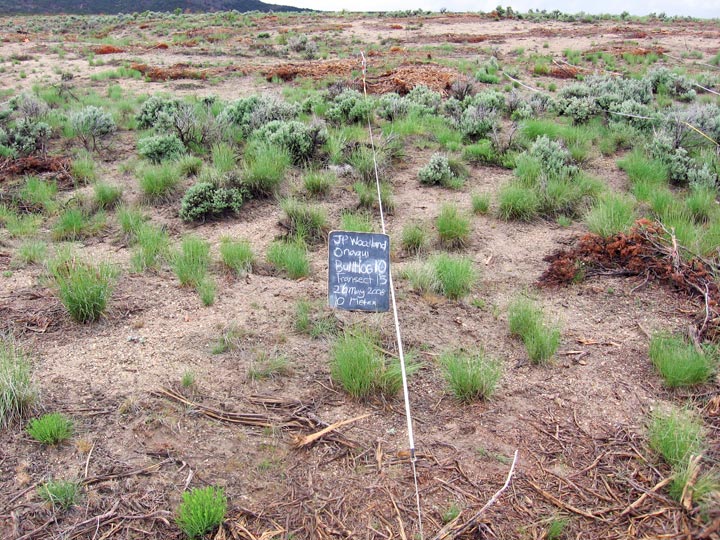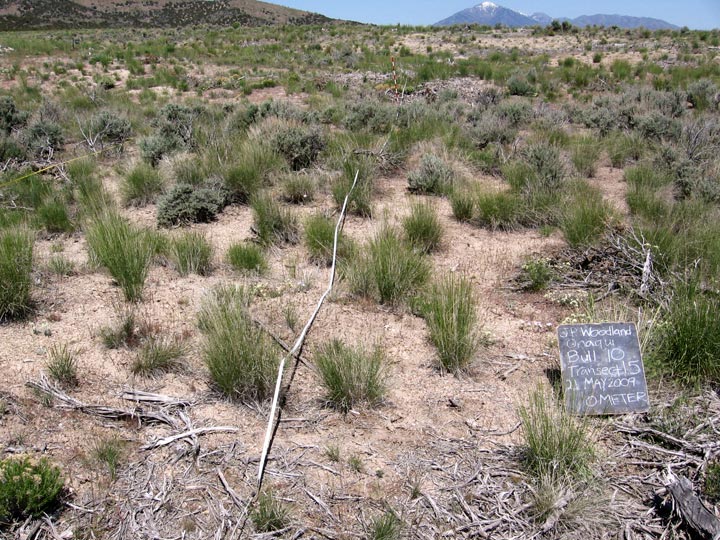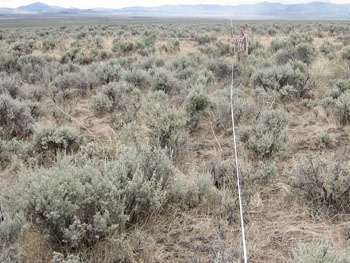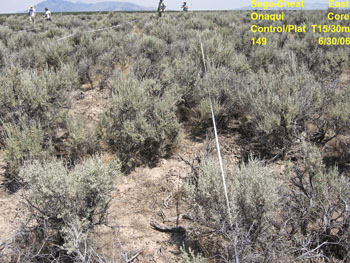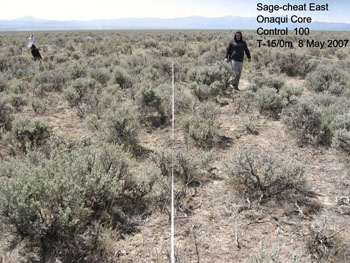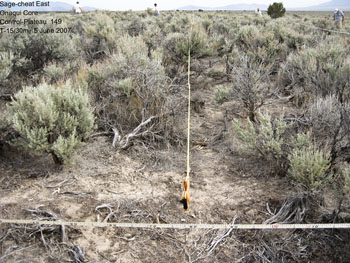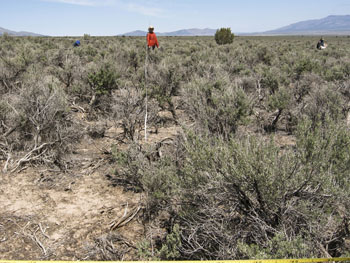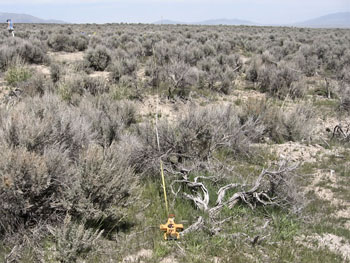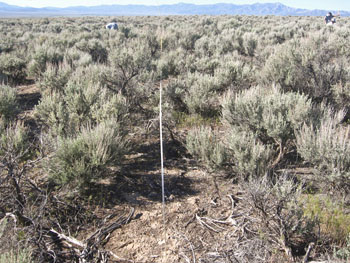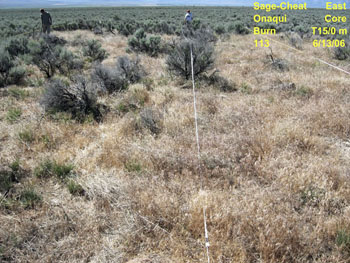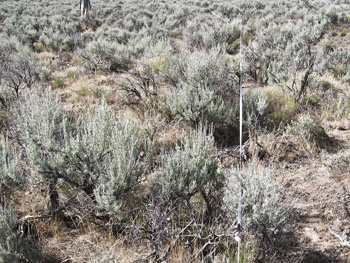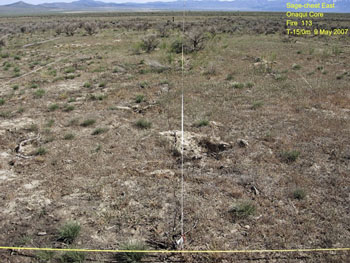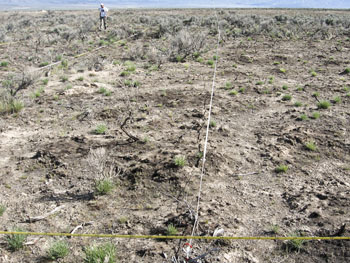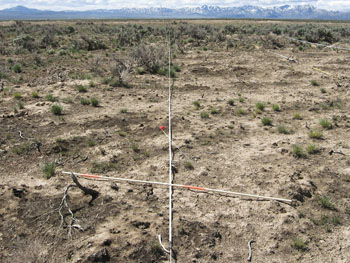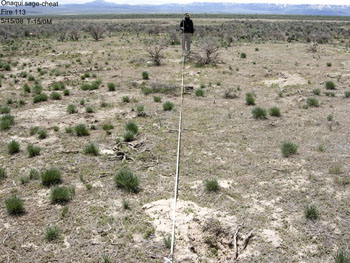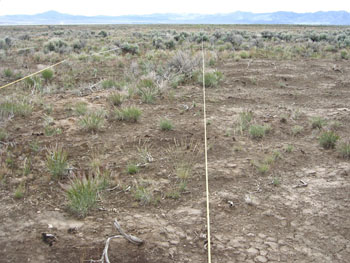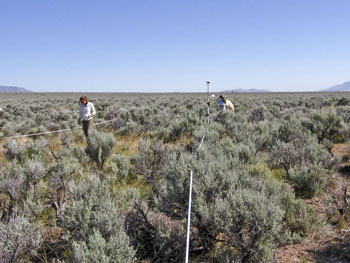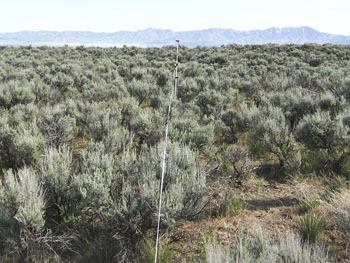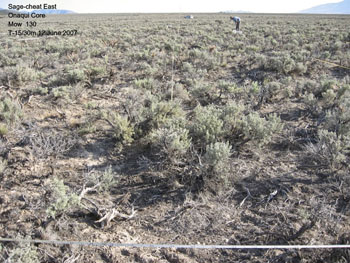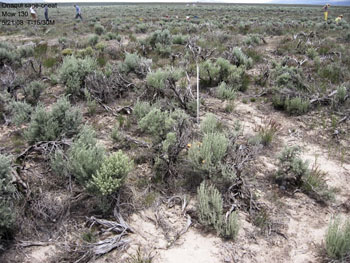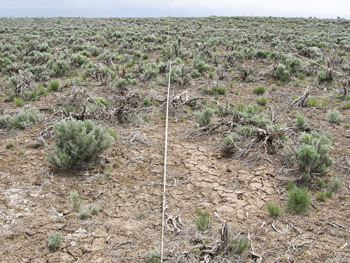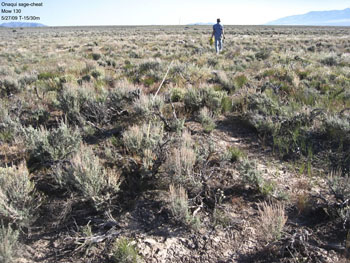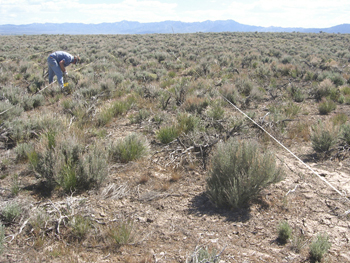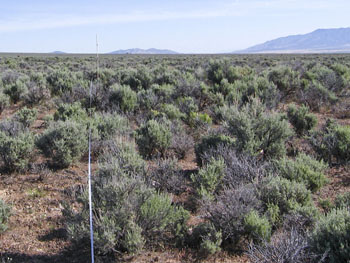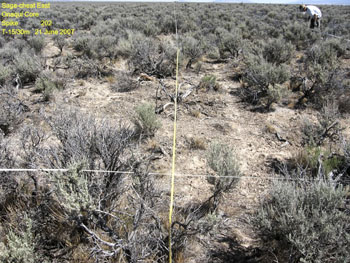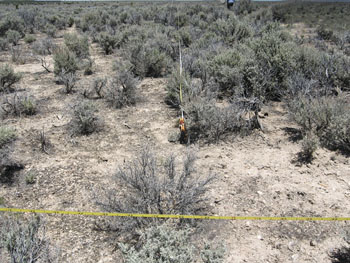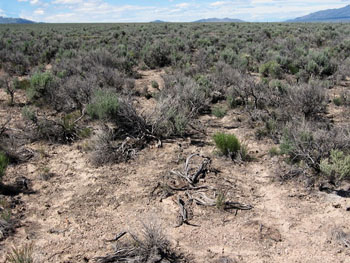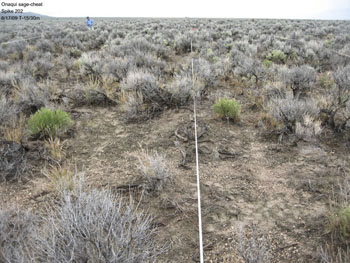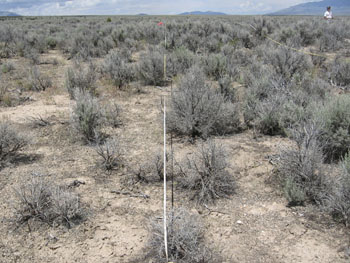Onaqui
Onaqui Sites
| Location: | Tooele County, UT, ~25 miles south of Tooele, UT |
| Land Management Agency: | Bureau of Land Management Salt Lake Field Office |
| Treatment Schedule: | Treatments were implemented in fall 2006. Click here for more information. |
Juniper Woodland Site
| Site Manager: | Maggie Gray |
| Plots: | Four 50-acre core plots (Control, Burn, Mechanical, and Bull Hog™) and two 1000-acre extensive plots (Control and Burn) (View select suplots over time.) |
| Elevation: | 5500-6200 ft |
| Topography: | 2-30% slope, E aspect |
| Common Vegetation: | Utah Juniper, Wyoming big sagebrush, black sagebrush, bluebunch wheatgrass, Sandberg bluegrass, Indian ricegrass, cheatgrass, and various native wildflowers. |
| Soils: | Gravelly loam and sandy loam |
| Fire Regime: | Historically ranging from 20 to >100 years. Woodland invasion suggests that the majority of these communities have not burned since the late 1800s. As woodlands gain dominance, the fire regime shifts to infrequent, high-intensity fires. |
| Representative Land Base: | Several million acres in western Utah, northeastern Nevada, and southern Idaho. |
| Grazing: | Plots are located within active grazing allottment and will be fenced for duration of the study. |
Sagebrush-Cheatgrass Site
| Site Manager: | Maggie Gray |
| Plots: | Four 75-acre plots (Control, Burn, Mechanical, and Herbicide) (View select suplots over time.) |
| Elevation: | 5400-5500 ft |
| Topography: | 3-4% slope, E aspect |
| Common Vegetation: | Wyoming big sagebrush, shadscale, viscid rabbitbrush, Sandberg bluegrass, squirreltail, Indian ricegrass, bluebunch wheatgrass, basin wildrye, and cheatgrass. |
| Soils: | Fine-loamy |
| Fire Regime: | Historically, several decades. Many of these communities experienced an increased fire return interval with settlement and overgrazing. Cheatgrass invasion can cause larger fires and reduce this interval to 10 years or less. |
| Representative Land Base: | Several million acres in western and central Utah, southern Idaho, northern Nevada, and eastern Oregon. |
| Grazing: | Plots are located within active grazing allottment and will be fenced for duration of the study. |
Updated 2009
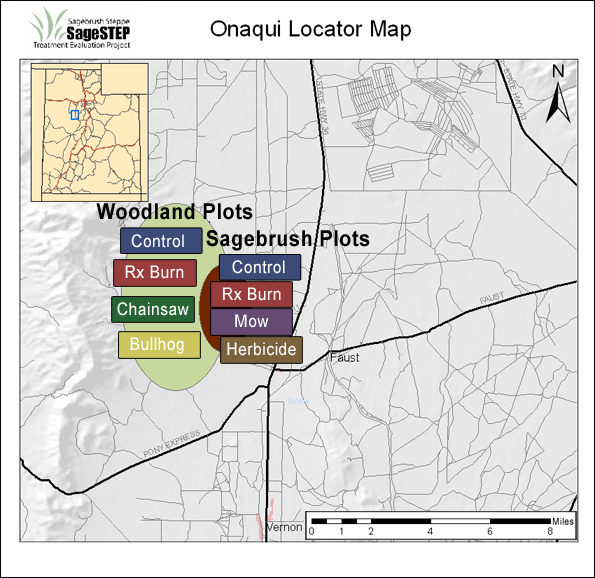
Woodland subplot progress images
Onaqui Juniper Woodland Control Subplot
Onaqui Juniper Woodland Prescribed Burn Subplot
Prescribed burns were implemented at all of the SateSTEP study sites. This treatment was used to help increase understanding of the relationship between plant communities, invasive species and fires. The Onaqui burn took place in the fall of 2006 after baseline data were collected. The images below show one of the prescribed burn subplots at the Onaqui site from 2006 to 2009.
Onaqui Juniper Woodland Chainsaw Cut Subplot
The chainsaw cut treatment was implemented at all SageSTEP woodland sites. All trees over 1/2-meter tall were cut with a chainsaw and left where they fell. The images below show one of the chainsaw subplots at the Onaqui site from 2006 to 2009. The chainsaw cut took place at Onaqui in the fall of 2006 after baseline data were collected.
Onaqui Juniper Woodland Mastication (Bull Hog™) Subplot
An additional mechanical treatment, tree mastication (using a Bull Hog™), was applied at the woodland sites in Utah only. This treatment was implemented because it has been of local interest to Utah landowners. The images below show one of the masticated subplots at the Onaqui site from 2006 to 2009. Mastication took place at Onaqui in the fall of 2006 after baseline data were collected. Throughout the plot, 100% of trees were removed by mulching them to the ground.
Sagebrush subplot progress images
Onaqui Sagebrush Control Subplots
All of the SageSTEP study sites have a control plot to account for variations that are not related to treatment, such as yearly climatic variation. Plateau pre-emergence herbicide was sprayed on half of the subplots on the control plot to control cheatgrass. The images below show two subplots from 2006-2009, one where Plateau was not used and one where Plateau was sprayed at a rate of 6oz per acre after treatment in fall 2006.
Onaqui Sagebrush Prescribed Burn Subplots
Prescribed burns were implemented on the Onaqui Sagebrush sites to help land managers better understand the relationship between soil composition, vegetation communities, invasive species like cheatgrass and fires. The Onaqui burn took place in the fall of 2006 after baseline data were collected. Plateau pre-emergence herbicide was crossed with the prescribed burn treatment on half of the subplots to control cheatgrass. The images below show two subplots from 2006-2009, one where Plateau was not used and one where Plateau was sprayed at a rate of 6oz per acre after treatment in fall 2006.
Onaqui Sagebrush Mow Subplots
The mow treatment was implemented to thin sagebrush and encourage understory growth. Mowing took place at Onaqui in the fall of 2006 after baseline data were collected. Plateau pre-emergence herbicide was crossed with the mowing treatment on half of the subplots to control cheatgrass. The images below show two subplots from 2006-2009, one where Plateau was not used and one where Plateau was sprayed at a rate of 6oz per acre after treatment.
Onaqui Sagebrush Herbcide Subplots
Tebuthiuron (Spike 20P) was applied aerial on the Onaqui herbicide plot to thin the sagebrush and encourage understory growth. This treatment took place in the fall of 2006 after baseline data were collected. Plateau pre-emergence herbicide was crossed with the Spike treatment on half of the subplots to control cheatgrass. The images below show two subplots from 2006-2009, one where Plateau was not used and one where Plateau was sprayed at a rate of 6oz per acre after treatment in fall2006.
Contact
Lisa Ellsworth
Project Co-coordinator
Dpt. Fisheries & Wildlife
Oregon State University
Corvallis, OR 97330
Email
(541) 737-0008
Beth Newingham
Project Co-coordinator
GB Rangelands Research
USDA Ag. Res. Service
Reno, NV 89512
Email
(775) 784-6057 ext. 233
Lael Gilbert
Outreach Coordinator
Utah State University
5215 Old Main Hill
Logan, Utah 84322-5215
Email
(435) 797-8455

Site Designed by Kite Media
